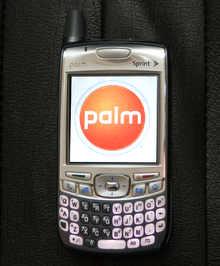 It was a smart phone without the smart or the phone. At the time it was a hot item for providers to carry around. It had no connectivity.except for a USB port. There were many programs that were available, for diagnosis, prescription information, and an electronic Rx writer, even medscape had a program that ran on it. In those days there were no "apps" It had an adapter that connected to your computer. That was it's connectivity that could be used for downloading programs, and sending Rxs
It was a smart phone without the smart or the phone. At the time it was a hot item for providers to carry around. It had no connectivity.except for a USB port. There were many programs that were available, for diagnosis, prescription information, and an electronic Rx writer, even medscape had a program that ran on it. In those days there were no "apps" It had an adapter that connected to your computer. That was it's connectivity that could be used for downloading programs, and sending RxsThe most popular PDA was manufactured by Palm. Palm was bought by HP, and it evolved into one of the first smartphones, setting a trend that wound up you know where.
The Palm Treo 700p is one of manysmartphones produced that combines Palm PDA functions with a cell phone, allowing for built-in voice and data.
It had an uncanny resemblance to the Blackberry Phone which was released in 1999.
History of Blacberry
If your are sentient then you know what replaced it. Many start up medical apps began in that time and space, graduating to mobile PC and smart phones.
Look no further.The MPR App is a do it all which can be downloaded from this link. There is an iOS and Android edition.
Coupled with the development of smart watches from Apple and Android, users will be able to call up almost anything with a flip of the wrist.
Precious smart rings are being developed. RingHealth Apps are on the way. Think about the possibilities.
Hospital Patient Band ID
Smart Ring NFC Personal ID verification
Health Care
Not only can NFC tags provide medical professionals with information about what treatments a patient should receive, but they can also keep track of when nurses and doctors have checked in with that patient and when. Each time the tag is scanned, the information about who scanned it and when can be transferred to a database. In addition to improving treatment, NFC tags also have potential in the research realm.
NFC Handshake with smart watch, smart ring, smartphone or NFC pay terminal






No comments:
Post a Comment